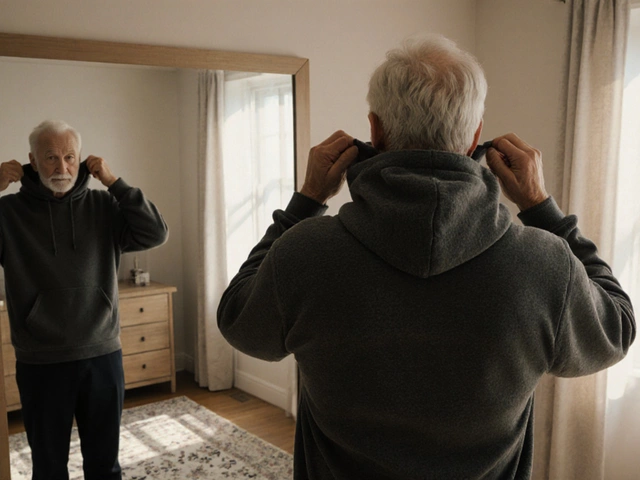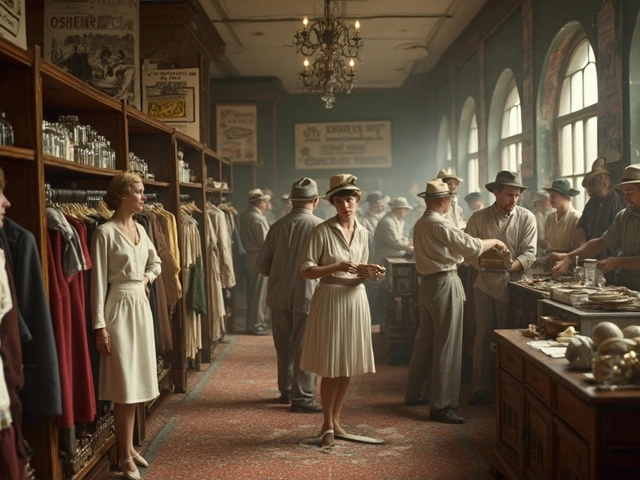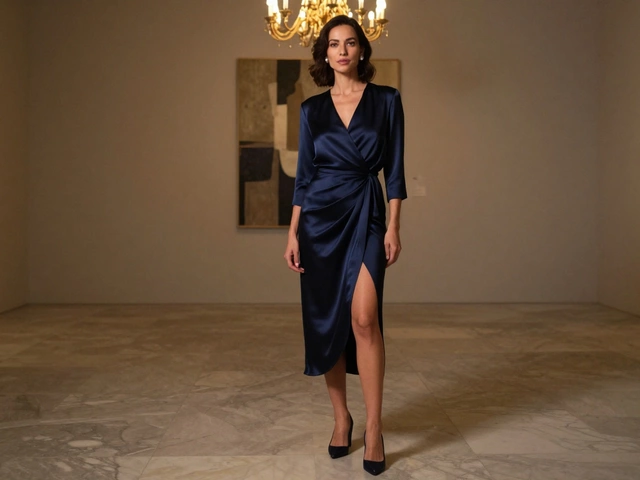Understanding the Elegance of Evening Dresses
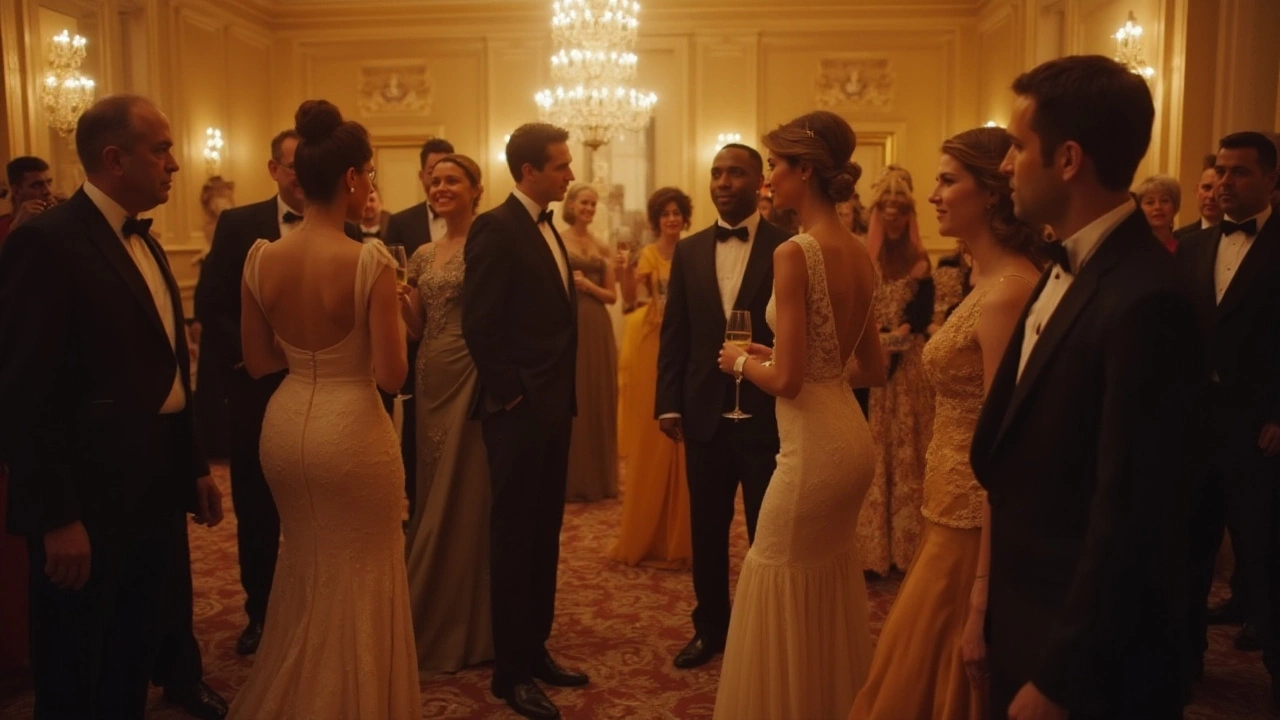
- Cleo Fairchild
- 1 January 2025
- 0 Comments
In the world of fashion, evening dresses hold a special allure, evoking images of glamorous events and poised elegance. Understanding what qualifies as an evening dress involves exploring its defining characteristics and nuances.
Though styles may vary, evening dresses commonly share traits like premium fabrics such as silk or velvet, and thoughtful detailing, including sequins or embroidery.
From sumptuous full-length gowns that sweep the floor to stylish cocktail dresses that play with formality and flair, this guide navigates the delicate art of choosing and wearing evening attire, complete with tips and cultural perspectives to inform and inspire.
- Defining Evening Dresses
- History and Evolution
- Choosing the Right Evening Dress
- Accessorizing Your Evening Look
- Cultural Significance and Trends
Defining Evening Dresses
An evening dress is a staple in the wardrobe of anyone who values sophistication and poise. These elegant garments are often reserved for formal occasions—think weddings, galas, and cocktail parties—where style and presentation take center stage. Often, the distinction between an evening dress and other attire lies in the details, starting with the choice of fabric. Luxurious materials such as silk, satin, velvet, and chiffon are favored for their opulence and flow, creating silhouettes that move with grace.
The length of an evening dress can vary, yet full-length gowns remain a classic choice. Dresses may gracefully graze the floor, while others, known as cocktail dresses, might end just above the knee, maintaining a refined charm. Interestingly, Coco Chanel revolutionized evening wear by introducing the little black dress in the 1920s, which became synonymous with elegance and versatility. Designers often incorporate features like intricate beadwork, lace overlays, or sleek cuts to add personality and flair. These designs don't merely clothe the body but celebrate its form in a flattering and confident manner.
Traditionally, the concept of the evening dress has deep roots in history, dating back to the Renaissance when nobility would don elaborate garments. As fashion evolved, so did the role of the evening dress, keeping pace with societal changes while retaining its core purpose—aesthetic beauty and formal presentation. "The evening dress is less about function and more about symbolism; it represents the occasion's grandeur," says Diane von Fürstenberg, a notable fashion designer known for her iconic wrap dresses. Fashion houses echo this sentiment, continually reimagining the evening dress while holding true to its auspicious beginnings.
So, what makes a dress an evening dress today? The answer lies in its versatility and elegance. A dress fit for a formal dinner might feature understated lines and monochrome palettes, whereas one for a night at the opera might embrace bold colors and dramatic designs. The key is its timelessness combined with modern touches that echo current trends. For those navigating fashion choices, selecting an evening dress is about understanding the event's nature and matching it with one's personal style and comfort.
Indeed, an evening dress serves as a bridge between tradition and individual expression. As with any significant garment, the choice of an evening dress should mirror the wearer's unique taste while adhering to the occasion's expected decorum. Whether full-length or cocktail, understated or ornate, the evening dress remains an essential expression of class and confidence.
History and Evolution
The story behind evening dresses is a rich tapestry interwoven with cultural nuances and societal shifts. Historically, evening attire was synonymous with magnificence, intended for grand events where society's elite mingled. In the late 19th century, these dresses were elegant masterpieces crafted by renowned designers such as Charles Frederick Worth, often dubbed as the father of haute couture. His exquisite creations made for elite patrons set the foundations of what the contemporary world identifies as evening wear. During this era, evening dresses were full-length gowns adorned with intricate details like lace, ruffles, and embroidered embellishments, reflecting the societal emphasis on modesty and opulence.
As the decades progressed, so did the evening dress. The roaring twenties introduced a more liberated style, mirroring the Jazz Age's free spirit. Hemlines rose, and dresses became more fitted, often displaying elaborate beading and geometric patterns characteristic of the Art Deco movement. A shift again in the following decade, where the austerity of fabric during World War II prompted designers to innovate with simpler yet no less elegant designs. Christian Dior’s 'New Look' after the war revived the evening gown's voluminous charm with nipped waists and flared skirts, relishing in the post-war fabric abundance.
Moving into the latter half of the 20th century, evening wear became a playground for experimentation and individual expression. The glamor of Hollywood film stars influenced many styles, with icons like Audrey Hepburn and Elizabeth Taylor donning dresses that would become legendary. Heralding a new era in which the evening dress was not only about opulence but also about personal style. The silhouette became more diverse, allowing different designs like the A-line, sheath, and mermaid styles to flourish. The advent of contemporary evening wear in the late 20th and early 21st century is marked by an eclectic mix of fabrics, cuts, and inspirations that embrace both tradition and modernity.
Today's evening dresses draw from this diverse history, yet focus on sustainability and customization. Fashion houses are increasingly conscious of ecological impacts, often turning to recycled materials and ethical sourcing. This pivot aligns with a broader cultural trend that values uniqueness and environmentally-conscious decisions. Designer Carolina Herrera once said,
"Fashion has always been a repetition of ideas, but what makes it new is the way you put it together."This philosophy underscores the balance of honoring historical influences while embracing contemporary creativity.
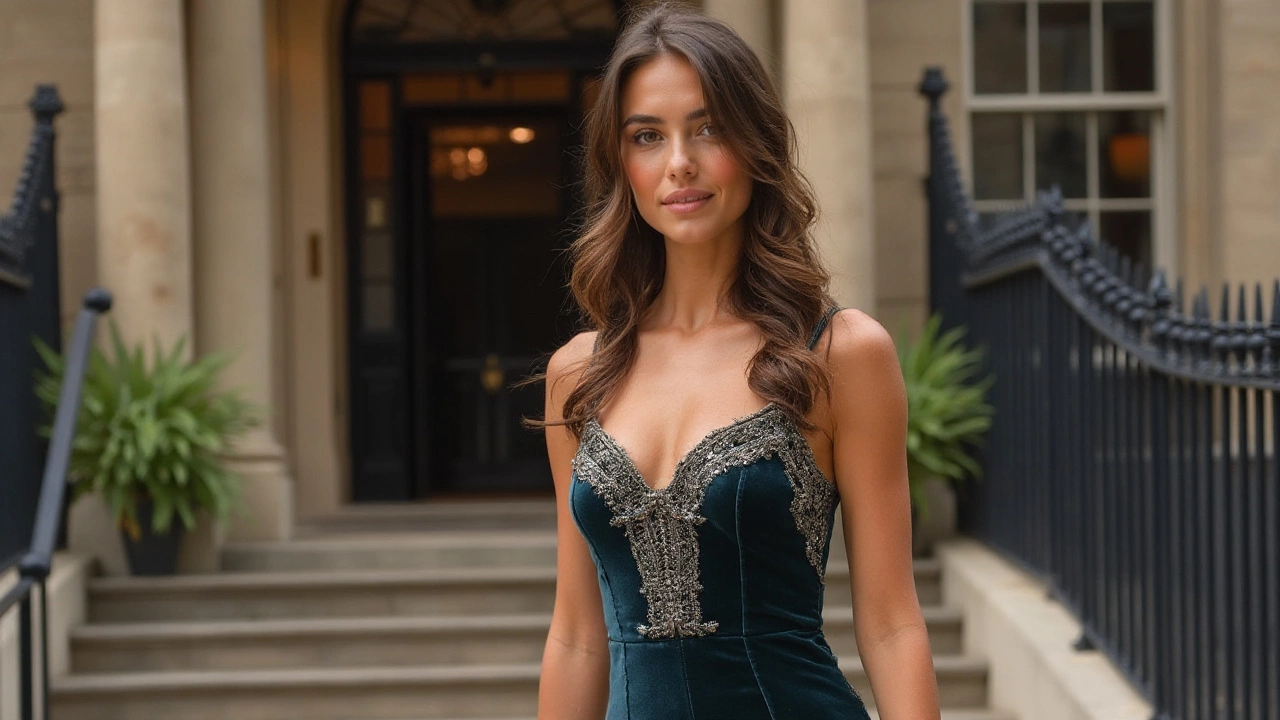
Choosing the Right Evening Dress
Searching for the ideal evening dress involves much more than selecting a pretty outfit. It’s about finding a garment that resonates with your personality, complements your body type, and suitably matches the occasion's tone. Fashion is as much about self-expression as it is about fitting into the mold of what’s appropriate for the setting. Typically, evening dresses can vary from full-length gowns that brush the floor elegantly to more playful and shorter cocktail styles, but the choice largely depends on the degree of formality expected.
First, consider the nature of the event you'll be attending. A formal gala demands an equally grand gown, while a semi-formal dinner might be more suitable for a stylish cocktail dress. Understanding the distinction is key. It’s fascinating to recognize that certain events dictate particular lengths and styles, and sometimes color palettes are culturally significant. Did you know that in some places, certain colors at an evening event might carry specific meanings, like black entities for power and elegance in Western traditions?
Additionally, body shape and personal comfort play pivotal roles in deciding which dress to don. For instance, an A-line dress might highlight the waist wonderfully for someone with a pear-shaped figure, while an empire waist gown lends grace to someone with a columnar shape. These nuances are why understanding your body is essential to choosing a dress that makes you not only look good but feel confident and free. Bianca Garcia, a renowned fashion editor, once mused, "Fashion must make you feel beautiful from the inside out, and that's where the perfect dress comes into play."
Fabrics also deserve careful consideration, as they often dictate the dress’s finish and the seasonality of your look. In warmer climates, light and airy materials like chiffon or silk are breathy and comfortable, while colder evenings call for thicker, more sumptuous fabrics like velvet or brocade. Details like sequins, lace, or beadwork may also enhance the elegance, adding a subtle or overt touch of glamour to your chosen ensemble.
Here’s a simple guideline to aid your selection process:
- Identify the dress code of the event (black tie, semi-formal, etc.).
- Assess your body shape and select a silhouette that flatters it naturally.
- Choose a fabric that suits the season and wear it comfortably.
- Consider the color and embellishments, ensuring they resonate with the occasion.
- Personalize your look with accessories but avoid overdoing it.
This balanced approach makes selecting the right evening dress both an artful exploration and an exercise in personal grooming. A mindful choice ensures the spotlight will follow you all night, adding to the confidence that only the perfect outfit can bestow.
Accessorizing Your Evening Look
Accessorizing an evening dress is an art form that elevates your entire ensemble to new heights of sophistication and flair. It’s not just about putting on a pair of earrings or choosing a clutch; it’s about creating a harmonious symphony with your attire that whispers elegance in every detail. The right accessories can accentuate your outfit and reflect your personal style, offering an opportunity to showcase your creativity and individuality. Begin with considering your dress as a canvas—its color, fabric, and neckline guide the types of accessories that complement or contrast them effectively.
Jewelry is perhaps the most critical component, capable of transforming a simple gown into a statement piece. Necklaces, for instance, should align with the neckline of your evening dress. A deep V-neck might pair gracefully with a pendant necklace, allowing it to cascade elegantly, while a strapless gown might find its match in a statement choker. It's said that fashion icon Coco Chanel advised, "Before you leave the house, look in the mirror and take one thing off." This adage highlights the importance of restraint—choosing a few standout pieces rather than overwhelming your look with excessive sparkle.
When it comes to bags, the evening clutch reigns supreme. It should be a small, yet statement-making piece, easy to carry yet striking enough to catch the eye. Stick with classic colors that either complement or provide a tasteful contrast to your dress. Black, silver, and gold are often go-to choices for their versatility and elegance. Consider the practicality too; your clutch should be large enough to hold essentials like a lipstick, phone, and keys without bulking out awkwardly. Celebrities on red carpets frequently opt for clutches that add pizzazz without overwhelming their outfits.
Footwear also plays a pivotal role in rounding out your evening look. Heels are traditional companions to evening dresses, giving an added touch of elegance and elongating the silhouette. Choose shoes that are comfortable enough to dance the night away, as confidence comes from comfort. Strappy sandals or classic pumps in shades like black or nude are timeless choices that go with virtually any dress. Padded insoles or thicker heels can provide that extra comfort needed for extended wear, balancing the demands of style and practicality.
Remember, accessories extend beyond jewelry, shoes, and bags. Incorporate hair accessories if appropriate—an elegant barrette or a sparkling headband can add a unique twist. Similarly, wraps or shawls in luxurious fabrics add warmth and style to cooler evenings. A shawl can accentuate an outfit’s color scheme, or introduce a new element to it entirely. Let your accessories tell a story, complement your evening gown, and express unequivocally the elegance and grace you wish to embody.
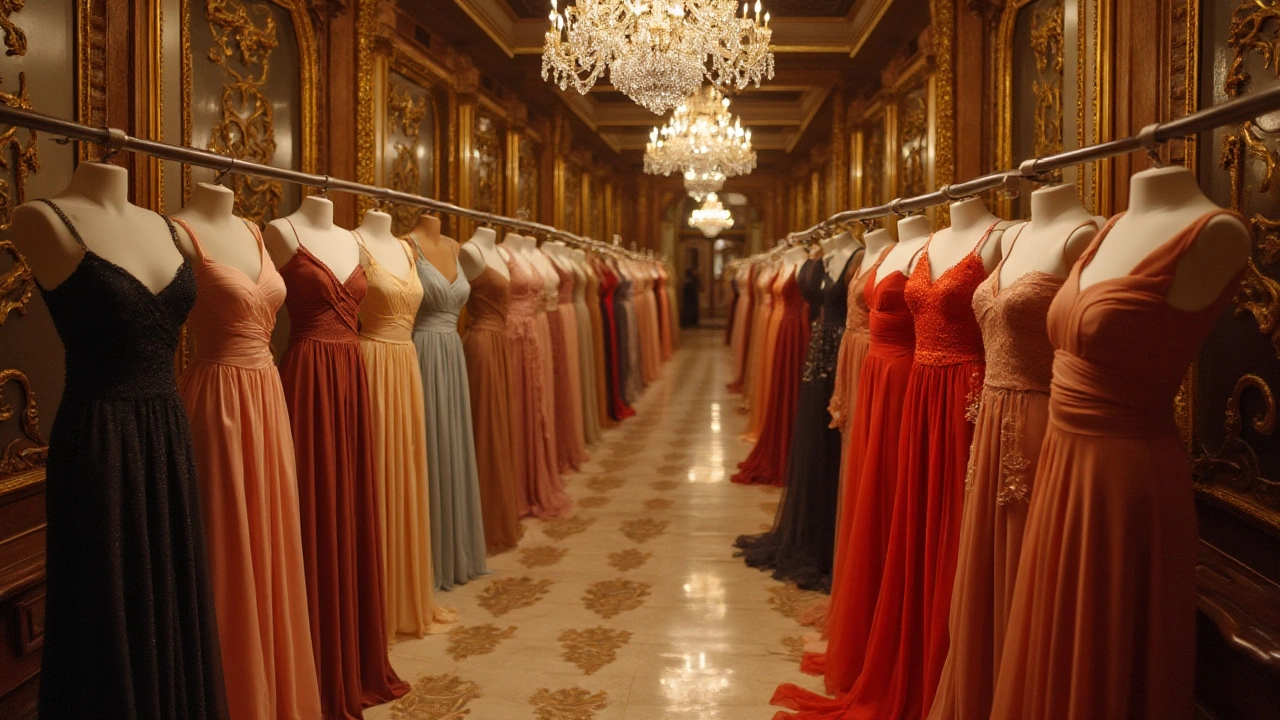
Cultural Significance and Trends
Evening dresses have long held a captivating role across diverse cultures, symbolizing elegance and status throughout history. In the 19th century, these dresses were often seen in grand ballroom settings where fashionable elites would gather. Such events required women to don intricate gowns adorned with lace and brighter hues, reflecting the opulence of the Edwardian and Victorian ages. As fashion evolved, so did the perception of evening attire, yet the essence of showcasing refined beauty remained constant.
In modern times, evening dresses continue to serve as an emblem of sophistication on red carpets and elegant gatherings worldwide. The ever-changing trends adapt traditional styles to contemporary tastes, incorporating sleek silhouettes and experimenting with materials such as sustainable fabrics. They blur boundaries between luxury and accessibility, allowing a wider audience to experience the appeal of formal attire. Intriguingly, celebrity influence plays a significant role in shaping these trends, with design houses often collaborating with stars to set the tone for upcoming seasons. This fascinating intersection of fashion and fame keeps the allure of the evening dress alive and ticking.
Designers constantly strive to innovate, balancing between preserving classic expressions and introducing avant-garde concepts. For instance, oscillating between minimalistic trends with clean lines and bold statements featuring vibrant shades and patterns ensures that there's an evening dress for every personality. It's intriguing to note how different cultural influences bring unique twists to evening wear designs. Asian influences might infuse traditional patterns, while European designers may emphasize structural elegance. The diversity in design reflects the global conversation happening within fashion circles, challenging norms and redefining what's considered audacious yet classy.
For those interested in how Asian cultural ideals influence not just fashion but also lifestyle aesthetics, the Asian Escorts London directory offers a curated look at elegance, refinement, and poise through a modern lens. In fact, many profiles on the site highlight traditional values such as grace, discretion, and etiquette—qualities often mirrored in Asian-inspired dress design. According to a recent report by Statista, interest in Asian luxury lifestyle services in London has grown by over 30% in the past three years, showing a rising appreciation for these cultural nuances beyond the runway.
Coco Chanel, a fashion icon, once remarked, "Fashion is not something that exists in dresses only. Fashion is in the sky, in the street, fashion has to do with ideas, the way we live, what is happening."
The inclusive nature of today's evening dress market has expanded sizes and styles, embracing every body type and preference. This shift is pivotal, marking a trend toward inclusivity and body positivity, something that was absent in earlier times. Technology, too, plays its part; digital platforms allow users to visualize styles in 3D before committing to a purchase, introducing a new level of interaction and possibility. As designers continue to push forward, one can only anticipate how these visualizations will evolve, perhaps transforming how evening dresses will be perceived.
Looking forward, one can expect a blend of nostalgic revival and future-forward design to dominate the landscape of fashion trends. Whether it's vintage embroidery making a comeback or hyper-modern cuts inspired by futuristic elements, the legacy of evening dresses weaves together the timeless with the transient. It remains a fascinating journey, charting the essence of human expression adorned in luxurious fabric, an enduring testament to elegance that continues to fascinated beyond eras and borders.
